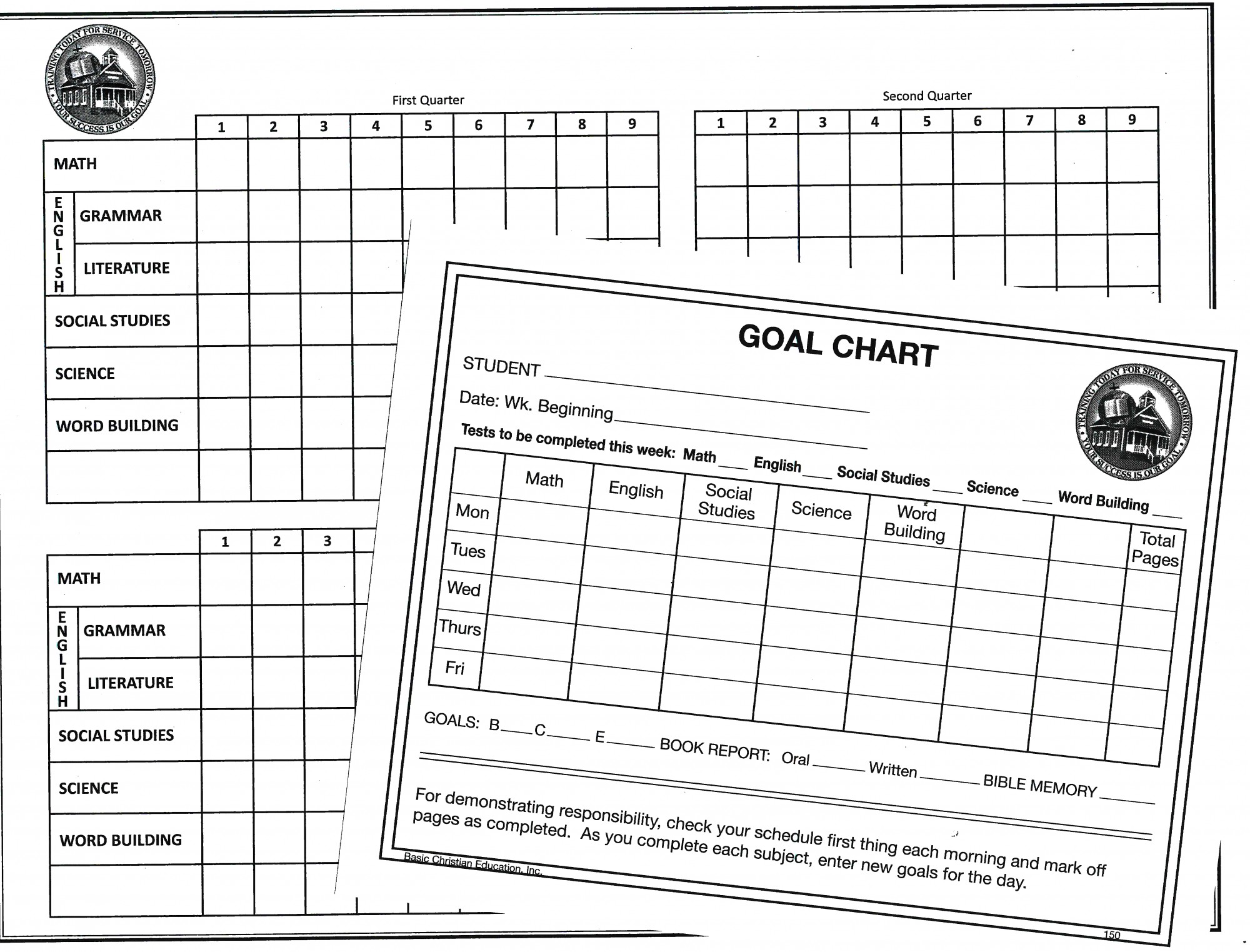Setting Goals - A Life Skill
By Carol
November 1, 2016Setting Goals - A Life Skill
Goal Cards to Progress Chart
The Goal Card is what the student looks at day by day to track their daily progress. Students should set daily goals themselves with the assistance and supervision of the parent/teacher. This will develop a life skill of setting and achieving short term goals. The goal card should be prominently displayed on their bulletin board. This allows both of you to see what was set, what is done, and if they have unfinished goals to be done as “homework.”
Students should set daily goals themselves with the assistance and supervision of the parent/teacher. This will develop a life skill of setting and achieving short term goals. The goal card should be prominently displayed on their bulletin board. This allows both of you to see what was set, what is done, and if they have unfinished goals to be done as “homework.”
Determining Goals
A PACE should be at a student’s desk (in progress) 2 ½ to 3 weeks. You can look at the number of pages in the PACE, divide that number by the number of days the student is expected to work on it, and you will arrive at how many pages should be accomplished (worked, scored, re-scored, reviewed, studied and mastered to pass the final test) per day. You may also look at how many pages should be completed per subject per week adjusting daily individual subject goals to meet the longer goal of a week.
PACE number 1001 to 1024 55 pages per week or 11 pages per day or 3 per subject
PACE number 1025 to 1048 70 pages per week or 14 pages per day or 3 per subject
PACE number 1049 to 1084 80 pages per week or 16 pages per day or 4 per subject
PACE number 1085 and up 90 pages per week or 18 pages per day or 4 per subject
(Totals are approximate & reflect a 5 subject PACE load – Do the math, always round up!)
The Progress Chart (Star Chart)
The Goal Card and the Progress Chart work hand in hand with the Progress Chart showing the longer term goals of quarterly and annual achievement.
Every third week is a balance week, a landmark for taking note of overall progress. By the last day of week three of a quarter the student is to have completed at least one PACE in each subject and placed a star on the Progress Chart corresponding to the week it was completed during. At the end of week six they are to have at least two stars per subject. On the last day of week 9, the end of a quarter, they are to have at least three stars in each subject. Three completed PACEs, Stars, in each subject per quarter. This equates to 15 stars each quarter and 60 total stars for a year’s work in the core subjects of Math, English, Social Studies, Science, and Word Building. Twelve completed PACEs, Stars, per subject totals a year’s work in that subject.
WHY use a goal card?
1. The student recognizes their responsibility for the day’s work.
2. Wise use of time is becomes more personal and established as a life skill.
3. The student experiences success when the goal is completed. (Positive reinforcement)
4. The student learns to gauge their abilities. (Set reasonable and achievable goals)
5. The intra-curricular balance is maintained. (Helps to reduce working ahead in the subject they like and letting the least liked subject languish) (PACEs work best when PACE numbers are near each other between subjects. PACES are designed to support concepts and vocabulary across subject matter within a number range.)
6. Students learn to plan their day and work load.
7. It encourages planning to avoid taking too many Check-Ups, Self Tests or PACE Tests all on the same day.
Using the Goal Card and the Progress Card helps develop setting and keep both short term and long term goals. These are life skills rarely taught by other academic programs. Use them both and don’t miss teaching for life. Check out our unique approach.


